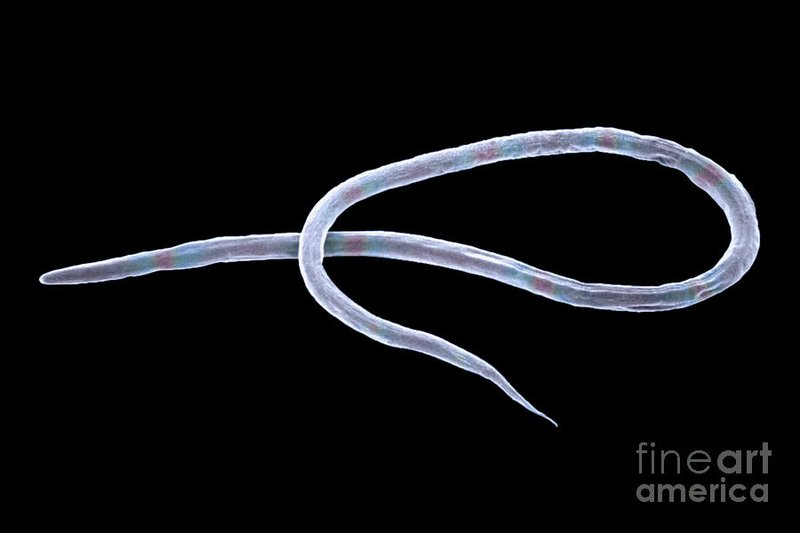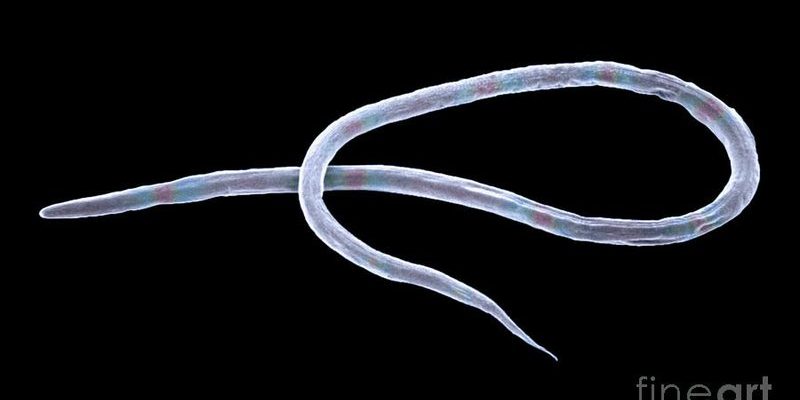
If you’ve ever made homemade vinegar or dipped into the world of natural fermentation, the presence of vinegar eels might surprise you. They are often more common in this environment than you might think. Let’s dive deeper into these creatures, unravel their secrets, and learn why they captivate both amateur and professional naturalists alike.
What Exactly Are Vinegar Eels?
Vinegar eels are tiny, transparent nematodes that thrive in vinegar. They measure about 1 to 2 millimeters long and are often invisible to the naked eye unless you’re really looking closely. You might think of them as tiny, wriggly noodles floating in a mysterious sea of acidity. They live in acetic acid-rich environments, primarily in apple cider vinegar.
You need to know that these little guys aren’t harmful to humans. In fact, they’re a natural part of the fermentation process. They feed on the bacteria that produce vinegar, helping to break down the organic matter and contributing to the ever-evolving ecosystem of your homemade vinegar. They might even be the unsung heroes of your favorite salad dressing!
Life Cycle and Habitat of Vinegar Eels
Vinegar eels have a pretty unique life cycle. They reproduce quickly, laying eggs that hatch in just a few days under the right conditions. They thrive in warm temperatures, making summer the peak season for vinegar eels. In fact, warmer environments can lead to larger populations of these worms.
You might be wondering where you can find them. Vinegar eels are typically abundant in unpasteurized vinegar, especially those made from apple cider. If you’ve ever spotted them in your homemade vinegar, consider it a sign that fermentation is happening as it should. Isn’t it wild how something so small can indicate that a process is working?
Why Do Vinegar Eels Matter?
So, what’s the big deal about vinegar eels? Well, they play an essential role in the fermentation and vinegar-making process. Their presence helps ensure that the vinegar is alive and flourishing with beneficial bacteria. They can be seen as little indicators—like traffic lights in the world of fermentation. When they show up, it’s usually a sign things are going well!
Additionally, vinegar eels are used in certain scientific studies and research, primarily due to their quick reproduction rate and simplicity. They serve as models for observing genetic traits and other biological processes. Think of it as a microscopic glimpse into the workings of life that can lead to a better understanding of more complex systems.
Vinegar Eels vs. Other Types of Eels
While the name might suggest otherwise, vinegar eels aren’t related to the eels you might find in rivers or oceans. They’re vastly different in structure and habitat. Traditional eels are much larger, have fins, and live in aquatic environments. Here’s a quick breakdown of the differences:
| Vinegar Eels | Traditional Eels |
|---|---|
| Microscopic, typically 1-2mm | Can grow several feet long |
| Live in acidic environments | Live in freshwater and saltwater |
| Feed on bacteria | Feed on small fish and invertebrates |
In essence, vinegar eels might seem a bit strange, but they have a specific niche where they thrive beautifully. They play a vital role in the fermentation ecosystem, unlike their larger cousins.
How to Use Vinegar Eels
If you’re diving into the world of fermentation, you might find yourself wondering how to manage these little guys. They can be helpful in some fermentation processes, especially in making vinegar! If you ever want to cultivate vinegar eels, here’s a simple way to do it:
- Start with a clean jar or vessel.
- Add unpasteurized apple cider vinegar.
- Leave it in a warm, dark place for a few days.
- Check back regularly, and you might just see them wriggling around!
Of course, if you find the vinegar eels a bit too off-putting, you can always strain them out. They won’t harm your vinegar but may not be the desired look for your culinary creations. Just remember to keep your vinegar-making environment clean to encourage healthy colonies of bacteria and, in turn, your vinegar eels.
Can You Eat Vinegar Eels?
Now, you might be thinking: “Can I eat vinegar eels?” While they’re not harmful, they’re generally not consumed by humans. Most people wouldn’t want to add tiny worms to their salad! In fact, in the world of culinary arts, the focus is typically on the vinegar itself and the flavors it carries—not on the little inhabitants.
That said, in certain cultures or for educational purposes, they might be used in nutrition studies or as part of experiments. But for the everyday person, it’s best to enjoy the vinegar and leave the eels to their own devices!
Wrap Up: The World of Vinegar Eels
Vinegar eels might seem like an oddity, but they’re part of a larger story about fermentation and natural processes. They thrive where the environment is rich in acetic acid, helping to create the vinegars we love. Their life cycle, habitat, and role in fermentation make them fascinating little creatures.
So, the next time you pour yourself a bit of homemade vinegar, remember the tiny vinegar eels that might be swimming around in there. They’re a part of the magic that makes fermentation so special. Who knew such small beings could play such a vital role? Enjoy your culinary adventures, and don’t shy away from exploring the little wonders of nature!

